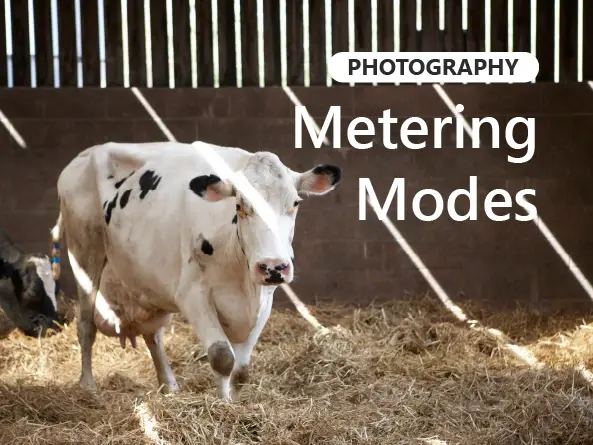Exploring Bokeh Effect in Photography: How to Create Beautiful Background Blur
- Mar 7, 2024
- 4 min read
Updated: Oct 10, 2024
When discussing photography, one term frequently arises: "bokeh". It is regarded as an attractive effect in photography, characterized by the aesthetic quality of the out-of-focus blur in parts of an image. This post discusses what bokeh is, how it enhances a photo, and how to achieve stunning bokeh with any camera.
Photo by Krappweis on FreeImages.com
Bokeh Effect in Photography: The Basics
Photo by Krappweis on FreeImages.com
Bokeh is a photography term of Japanese origin, derived from the word "boke," which means "haze" or "blur". Specifically, bokeh refers to the quality of the out-of-focus areas in a photograph. It does not just mean any kind of blur; it refers specifically to how the lens renders out-of-focus points of light. Bokeh may come in the way of soft round circles, hexagons, or any form of shape that can be seen, depending on the lens and the aperture used. It can make your picture pop, guiding the viewer's eye to the subject against a pleasing, non-distracting background.
Bokeh refers specifically to how the lens renders out-of-focus points of light.
The Aesthetic Appeal of Bokeh
Bokeh is renowned for isolating the subject from the background, minimizing distractions and fully emphasizing the focal points. This type of focus technique can make a statement, maybe giving a mood to the shot, or better yet, support the story—or simply let the subject stand out against a soft, dreamy background.
Photo by ecrokid on FreeImages.com
Creating Bokeh: Essential Techniques
The reality is that beautiful bokeh cannot be bought with a pricey camera or an expensive lens alone. It results instead from understanding the techniques and using them effectively. Here are some of the tips which may help you produce beautiful bokeh by any camera:
Photo by kaniths on FreeImage.com
1. Aperture Settings
Wide Apertures: Use wide apertures (low f-number) like f/2.8, f/1.8, or even f/1.4 for better bokeh. This allows more light to pass through the lens with a wide aperture and, therefore, gives you a shallower depth of field and background blur while retaining your subject in focus.
2. Lens Choice
Fast Lenses: A fast lens is that lens which has a wide maximum aperture. Quite frequently, prime lenses have wider apertures than zoom lenses and hence can offer a more pronounced bokeh effect.
Focal Length: Other types of lenses, such as telephoto, with a longer focal length, can increase the bokeh effect by compressing space and depth in an image.
3. Distance Matters
Subject to Background Distance: Position your subject further away from the background. The more the background is far, the blurrier it will appear.
Camera-Subject Distance: Getting closer to your subject while keeping the background distant enhances the bokeh effect.
4. Light and Composition
Point light sources: Bokeh is further enhanced by point light sources in the background. This can range from sunlight coming through trees to the lights of a city at night.
Composition: Pay attention to the background, even if it's going to be blurred. The colors, shapes, or even the sources of light of whatever is going to be featured at the back will all contribute to the final appearance of the bokeh.
Photo by Lockheed on FreeImages.com
Bokeh with Different Cameras
Bokeh is not exclusive to DSLR or mirrorless cameras. Here’s how you can achieve it with various types of cameras:
DSLR and Mirrorless Cameras
Used with a DSLR or mirrorless, naturally designed with a large sensor and works towards allowing the use of a great series of lenses to make bokeh. Where distance is the problem, use the above-discussed tips on the aperture of your lens and the choice of lenses to gain or achieve that.
Compact and Bridge Cameras
While compact cameras have small sensors that give less control over the depth of field, one can still succeed to have the bokeh effect by zooming in on the subject and putting as much distance as he can between the subject and background. Use portrait mode if there opens the aperture wider, most of the time.
Smartphones
Modern smartphones now have a portrait mode, particularly for duplicating a shallow depth of field for bokeh—albeit a digitally rendered one. Advancement in technology has now allowed the smartphone bokeh to be more convincing and appealing.
Common Bokeh Mistakes to Avoid
Overdoing It: While it's certainly true that bokeh can add a wonderful, painterly quality to your photos, too much blur can either be overwhelming in its presence, distracting from the subject, or make a viewer feel disengaged.
Ignoring Composition: Do not forget the rules of composition when attempting to create bokeh. The rule of thirds, leading lines, and other elements of composition still apply.
Not all bokeh is created equal, emphasizing the importance of its quality. Sometimes the blur can be busy or even distracting—this is generally referred to as 'bad bokeh.' Pay as much attention to the quality of the out-of-focus areas as it pays for the quality of in-focus areas.
Photo by Pellinni on FreeImages.com
Bokeh is an effect closer to art than to technique; it is an option for art that gives depth, emotion, and focus to your pictures. By mastering the creation of bokeh, photographers from all levels will be able to increase the visual impact of the images greatly. Here, the subject and the story of your photograph should be in harmony, without one overpowering the other. With just a bit of practice and creativity, the world of bokeh offers many possibilities to explore and enjoy.
















